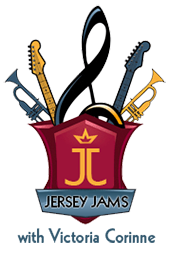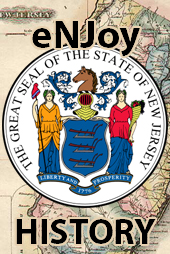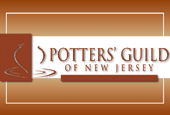Did you know? The United States of America didn’t start minting its own coinage “nationally” until 1793 (technically 1792 with the half disme/dime). Prior to that, circulated currency was mostly from Britain (which makes sense, of course, since we were British colonies), Spain/Mexico, and France. In the 1700s, copper halfpence (half pennies) donned the bust of England’s King (depending on the years in the 1700s it was either King George I, King George II, or King George III).
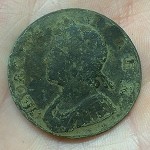
1735 King George II Half Penny
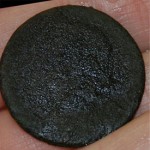
Counterfeit King George II Half Penny
If you knew that, did you know that half or more of the King George halfpence in circulation were counterfeit? During my searching of New Jersey soils, I’ve been lucky enough to find both authentic and counterfeit King George II half pennies, as well as an 1806 or 1807 King George III. The KGIII was a spectacular find in my opinion as it was completely unexpected! I was helping someone who’s home was built in 2009 determine if there was an oil tank on their property. While that search came up empty (much to their delight) I continued to investigate the land for smaller artifacts. After a bunch of big pieces of aluminum siding, I was shocked to see a big copper coin lying in the plug I had dug. And in my hometown no less!
Prior to “national” coinage, some colonies minted their own coins. In the world of relic hunting, we call them “state coppers.” Of the many of the colonies that minted their own coinage and tokens, New Jersey was one of them. While I’ve been fortunate enough to find a few Connecticut copper coins, I’ve never found the one coin I seek the most – the New Jersey copper.
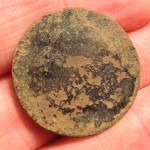
Connecticut Copper
Minted only between 1786-1788, there are almost 150 varieties of the coin, and vary in rarity. While they look mostly similar, they differ in minor design details, how well centered (or not) the press is, date size, etc. According to Coin and Currency Collections in the Department of Special Collections University of Notre Dame Libraries (coins.nd.edu):
“On June 1, 1786, the New Jersey legislature authorized Walter Mould, Thomas Goadsby, and Albion Cox to mint three million copper coins at a weight of 150 grains each over a two-year period in return for a ten percent royalty to the state and the posting of a £10,000 surety bond. The coppers were to circulate at fifteen to the shilling and were to be produced within New Jersey. The design of the coins was not resolved, the legislation simply stated they were to have “Marks and Inscriptions as shall be directed by the Justices of the Supreme Court, or any one of them.”
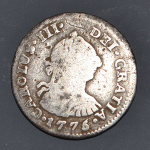
1775 Spanish half reale

1775 Spanish half reale
“The obverse of the copper displayed a plow beneath a horse head facing right with the legend NOVA CÆSAREA (as on the state coat of arms) and the date. The use of “CÆSAREA” is based on the ancient classical name for the Island of Jersey in the English Channel. In Roman times this island was called Caesar’s Island (insula Caesarea) so when latinizing the statename, the word “Jersey” was transformed to “Caesarea.” The 1688 indenture issued by Charles II called the colony “Nova Caesarea, of New Jersey.” The reverse of the coin depicted an American shield that is similar to one used on some of the confederation patterns along with the national motto as the legend, E PLURIBUS UNUM (One from many). New Jersey coppers were the first coins to bear the national motto.”
The Coin and Currency Collections in the Department of Special Collections University of Notre Dame Libraries website provides a great history, and interesting story about the men who were granted rights to mint NJ coppers, the lawsuits and jail time they endured, and the method used of pressing the design into the copper blank. I highly recommend you read the full story.
I hope some day to have my own story of the NJ Copper to share with you. If and when that day comes, I hope the coin is in decent enough shape for me to identify it. NJ soils and the fertilizers used on them can be tough on copper coins. I have a few coins that, in spite of my best restoration efforts, I simply can’t and will never be able to identify. Maybe one is indeed a NJ copper, but until I can say that with certainty, my search will continue. And truth be told, when that day comes, one won’t be enough!
 Grant Hansen is an avid relic hunter, and focuses most of his efforts in his home state of New Jersey. He and his detecting partner James run http://relic-hunters.com and work with local and national historical societies and museums to preserve lost history. Some of the best finds Grant has made is the people he’s met and befriended along the way. It’s the kindness and generosity of property owners that makes it possible for him to pursue his passion. These articles are dedicated to these special people.
Grant Hansen is an avid relic hunter, and focuses most of his efforts in his home state of New Jersey. He and his detecting partner James run http://relic-hunters.com and work with local and national historical societies and museums to preserve lost history. Some of the best finds Grant has made is the people he’s met and befriended along the way. It’s the kindness and generosity of property owners that makes it possible for him to pursue his passion. These articles are dedicated to these special people.



















